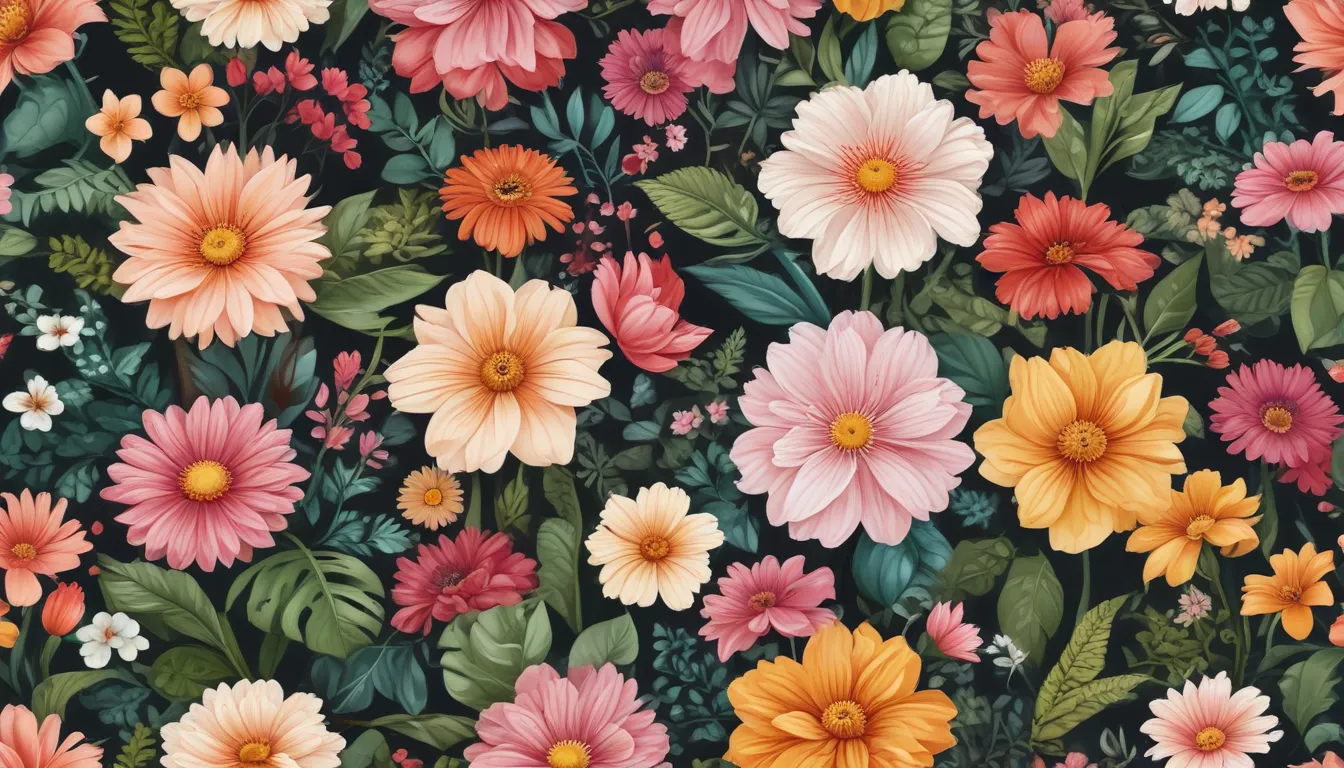The pictures we use in our articles might not show exactly what the words say. We choose these pictures to make you interested in reading more. The pictures work together with the words but don’t take their place. The words still tell you the important facts.
Flowers have graced our planet for eons, captivating us with their beauty and fragrant charm. Their kaleidoscope of colors, shapes, and sizes tell unique stories that enrich the natural world. In this article, we will delve into sixteen captivating facts about flowers that will expand your knowledge and deepen your appreciation for these wondrous creations of nature. Join us on a journey through the floral realm as we uncover the secrets of these enchanting beings.
The Marvelous Diversity of Flowers
Flowers are renowned for their vibrant colors and one-of-a-kind characteristics. From the delicate petals of a rose to the flamboyant blooms of an orchid, the world of flowers offers a breathtaking array of diversity.
The Crucial Role of Flowers in Plant Reproduction
Flowers serve as the reproductive structures of plants, housing the male and female parts necessary for pollination, fertilization, and seed production.
The Enchanting Aromas of Flowers
One of the most alluring aspects of flowers is their captivating scents. From the sweet aromas of jasmine and lavender to the romantic fragrances of roses and lilies, flowers delight our senses with their enchanting perfumes.
The Historical and Cultural Significance of Flowers
Throughout history, flowers have played a significant role in various cultural and religious ceremonies, symbolizing profound meanings and offering as gifts to deities.
The Healing Properties of Flowers
Many flowers possess medicinal properties and are utilized in herbal remedies and traditional medicine. For example, chamomile flowers are known for their calming effects, while calendula flowers boast antibacterial and anti-inflammatory properties.
The Language of Flowers
In the Victorian era, a complex language known as "floriography" emerged, where specific flowers were used to convey messages or emotions. Each flower held a unique symbolism, such as the red rose representing love and passion.
The Allure of Pollinator-Attraction in Flowers
Flowers have evolved to attract pollinators like bees, butterflies, and hummingbirds through their colors, patterns, and scents. Nectar serves as a reward for pollinators, ensuring the continuity of plant reproduction.
The World’s Largest Flower: Rafflesia Arnoldii
The Rafflesia Arnoldii, also known as the "corpse flower," claims the title for the world's largest flower, boasting a diameter of up to three feet and emitting a pungent odor reminiscent of rotting flesh.
The Phenomenon of Sun-Tracking in Sunflowers
Heliotropism, or sun-tracking, is a common trait observed in sunflowers. Their large blooms follow the sun's path from east to west, maximizing sunlight exposure.
The Sacred Symbolism of the Lotus Flower
The lotus flower holds spiritual significance in Eastern religions, symbolizing purity, enlightenment, and the capacity to overcome adversity.
The Survival Adaptations of Flowers
Flowers exhibit various adaptations to thrive in extreme environments. Some store water like desert cacti, while others withstand cold temperatures and low oxygen levels in alpine regions.
The Diverse Cultural Symbolism of Flowers
While flowers like roses signify love and beauty in many cultures, certain blooms may carry negative connotations in others. For instance, white flowers symbolize death and funerals in some Asian cultures.
Flowers in the Culinary World
Many edible flowers, including lavender, chamomile, and nasturtium, enhance culinary creations with their flavors, colors, and artistic flair, gracing salads, teas, and desserts.
The Oldest Flower Fossil: Archaefructus Sinensis
Discovered in China in 2002, the Archaefructus Sinensis fossil is believed to be the earliest known flowering plant, shedding light on the evolution of flowers.
The Therapeutic Effects of Flowers on Mental Well-being
Research suggests that interactions with flowers, such as gardening or arranging them, can positively impact mental health, reducing stress, boosting mood, and fostering happiness.
The Inspirational Role of Flowers in Art and Literature
For centuries, flowers have inspired artists, writers, and poets with their beauty, colors, and symbolism, serving as muses in paintings, sculptures, and literary works.
Flowers are more than mere ornaments; they are living marvels that enrich our lives with practical and aesthetic benefits. Whether gracing our gardens, commemorating special moments, or brightening our days, flowers possess a unique ability to evoke joy and inspiration.
Conclusion: Embracing the Wonder of Flowers
Flowers are not only beautiful but also fascinating. These sixteen facts offer a glimpse into the mesmerizing world of flowers, highlighting their cultural, symbolic, and ecological significance. Whether you are a flower enthusiast or simply admire nature's beauty, exploring the realm of flowers can deepen your connection to the natural world.
Next time you encounter a bouquet or behold flowers blooming in a garden, take a moment to marvel at their intricate beauty and the essential role they play in our ecosystem. Flowers embody the splendor and diversity of nature, enriching our lives in ways both tangible and intangible.
FAQs: Blossoming Insights
- What is the purpose of flowers?
-
Flowers serve as vital components in plant reproduction, attracting pollinators, producing seeds, and enhancing plant success.
-
How do flowers reproduce?
-
Flowers reproduce through pollination, transferring pollen from the male to the female reproductive organs, leading to fertilization and seed production.
-
Are all flowers edible?
-
Not all flowers are edible, so it is crucial to ensure that the flower you consume is safe and free from pesticides.
-
Can flowers communicate with each other?
-
Recent studies suggest that flowers may have an underground communication system to alert each other about environmental changes.
-
Do flowers have medicinal properties?
- Yes, many flowers contain medicinal compounds with various health benefits, such as chamomile for relaxation.
By immersing yourself in the world of flowers, you embark on a journey of discovery and appreciation for these captivating creations that enrich our lives in countless ways. Let the beauty and wonder of flowers inspire you and deepen your connection to the natural world.






